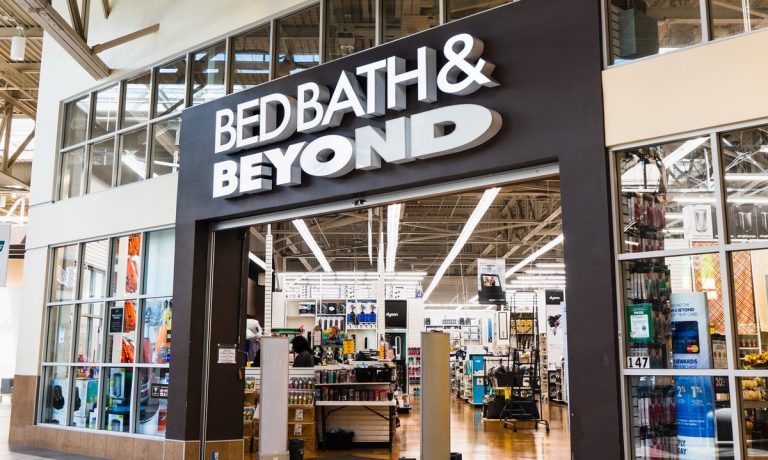
Just five weeks after being thrown a figurative lifeline of financial and emotional support from billionaire activist investor Ryan Cohen, household furnishing retailer Bed Bath & Beyond has doused investors with disappointment and reversed its recent gains.
This, after the company’s earnings for the three months ended Feb. 26 included an unexpected loss, a 12% drop in same-store sales and an 18% decline in its budding online business.
“Macroeconomic factors, such as the disruption of the global supply chain, the Omicron variant, as well as the geopolitical turbulence weighing on consumer confidence, have uncovered more vulnerabilities than we could have foreseen at this stage of our transformation,” Bed Bath & Beyond CEO Mark Tritton said in a statement, which characterized the retailer’s Q2 performance as disappointing.
Unsurprisingly, the results and conference call commentary did not sit well with investors who have enjoyed recent gains fueled by the Cohen stake, as well as from plans to, as Tritton said, “completely rebuild the foundation of our business.”
Isolated or Systemic?
The troubling results from a major national retail brand coming at the outset of earnings season have only added to existing worries, and also stoked questions whether Bed Bath & Beyond’s problems were unique to it or indicative of a more broad-based systemic problem that crimped the entire sector.
While Tritton blamed a “lack of available inventory to sell” in the retailer’s 1,100 stores and website as part of the problem, he stressed that trend would correct itself in the coming quarters as expected supply chain improvements kick in during the second half of the year.
“Our buybuy BABY and Harmon banners demonstrate our ability to achieve stabilization and growth when there is strength in the face of macroeconomic factors given its domestic supply chain, as well as different key product demand such as apparel and gear versus our Bed Bath banner,” the company said.
The retailer also pointed out that sales in five key categories (bedding, bath, kitchen food prep, indoor decor and home organization), which account for two-thirds of its revenue, were impacted by the inventory woes. It’s a scenario that suggests a sharp rebound is possible once product is available again, but also assumes customers will come back and not have found other places to shop.
A Sticky Question
To be sure, Bed Bath & Beyond has been on a volatile ride, with its stock falling 70% from a near-term high in January 2021, to the more recent whipsawing in the past six months that precipitated the Cohen investment. Even so, the franchise’s market value has slid below $2 billion with a share price in the teens, from a $77 peak set in 2013.
When asked by analysts on the conference call about the “lack of stickiness” and what’s being done to counter declining customer counts, Tritton said the face of the pandemic era customer was different and that retailer was starting to see a stabilization of that base.
“I think during the COVID moment we definitely saw in ‘20 and ‘21 a one-time customer that was searching digitally, and that has affected our customer count in the short term,” Tritton said. “So we’re recovering out of that, and we have plans to fortify the 35 million (base) and make them stickier and build more new customers across multi-generations,” he added.
According to CFO Gustavo Arnal, Bed Bath & Beyond’s revamped loyalty program is also helping attract and retain shoppers.
“A larger proportion of our customers are now omni shopping, both online and in store, and the frequency of shopping is much higher than when they were a store-only customer, and with a larger ticket and basket,” Arnal said on the company’s webcast.